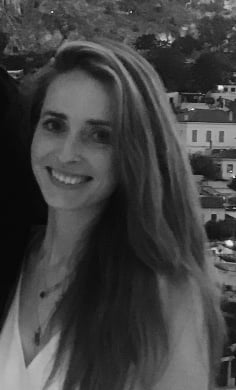Separation Techniques
Filtration
- Used to separate an undissolved solid from a mixture of the solid and a liquid / solution ( e.g. sand from a mixture of sand and water)
- Centrifugation can also be used for this mixture
- A piece of filter paper is placed in a filter funnel above a beaker
- A mixture of insoluble solid and liquid is poured into the filter funnel
- The filter paper will only allow small liquid particles to pass through as filtrate
- Solid particles are too large to pass through the filter paper so will stay behind as a residue

Filtration of a mixture of sand and water
Crystallisation
- Used to separate a dissolved solid from a solution, when the solid is much more soluble in hot solvent than in cold (e.g., copper sulphate from a solution of copper (II) sulphate in water)
- The solution is heated, allowing the solvent to evaporate, leaving a saturated solution behind
- Test if the solution is saturated by dipping a clean, dry, cold glass rod into the solution
- If the solution is saturated, crystals will form on the glass rod
- The saturated solution is allowed to cool slowly
- Crystals begin to grow as solids will come out of solution due to decreasing solubility
- The crystals are collected by filtering the solution, they are washed with cold distilled water to remove impurities and are then allowed to dry

Diagram showing the process of crystallisation
Simple Distillation
- This is used to separate a liquid and soluble solid from a solution (e.g., water from a solution of salt water) or a pure liquid from a mixture of liquids
- The solution is heated, and pure water evaporates producing a vapour which rises through the neck of the round bottomed flask
- The vapour passes through the condenser, where it cools and condenses, turning into the pure liquid that is collected in a beaker
- After all the water is evaporated from the solution, only the solid solute will be left behind

Diagram showing the distillation of a mixture of salt and water
Fractional Distillation
- This is used to separate two or more liquids that are miscible with one another (e.g., ethanol and water from a mixture of the two)
- The solution is heated to the temperature of the substance with the lowest boiling point
- This substance will rise and evaporate first, and vapours will pass through a condenser, where they cool and condense, turning into a liquid that will be collected in a beaker
- All of the substance is evaporated and collected, leaving behind the other components(s) of the mixture
- The fractionating column contains glass beads which increases the surface area the evaporated substances come into contact with within the column
- This means that the substances with higher boiling points are more likely to cool and condense, leaving the substance with the lower boiling point to evaporate out of the fractionating column and into the condenser
- For water and ethanol
- Ethanol has a boiling point of 78 ºC and water of 100 ºC
- The mixture is heated until it reaches 78 ºC, at which point the ethanol boils and distills out of the mixture and condenses into the beaker
- When the temperature starts to increase to 100 ºC heating should be stopped. Water and ethanol are now separated

Fractional distillation of a mixture of ethanol and water

